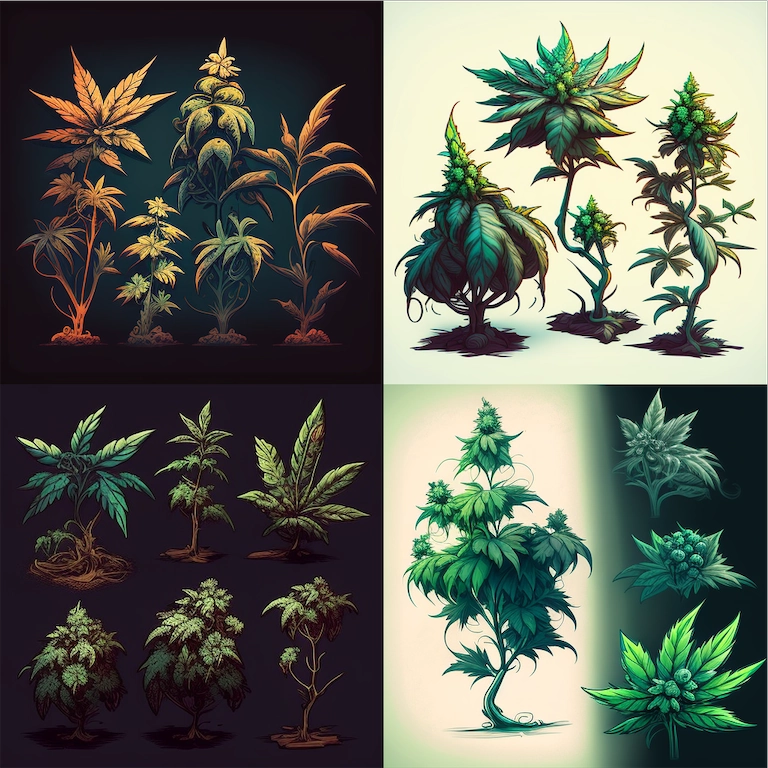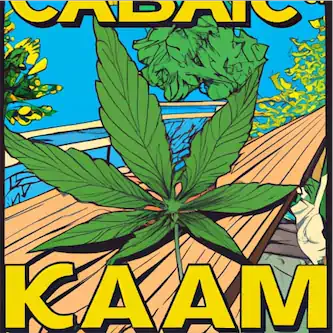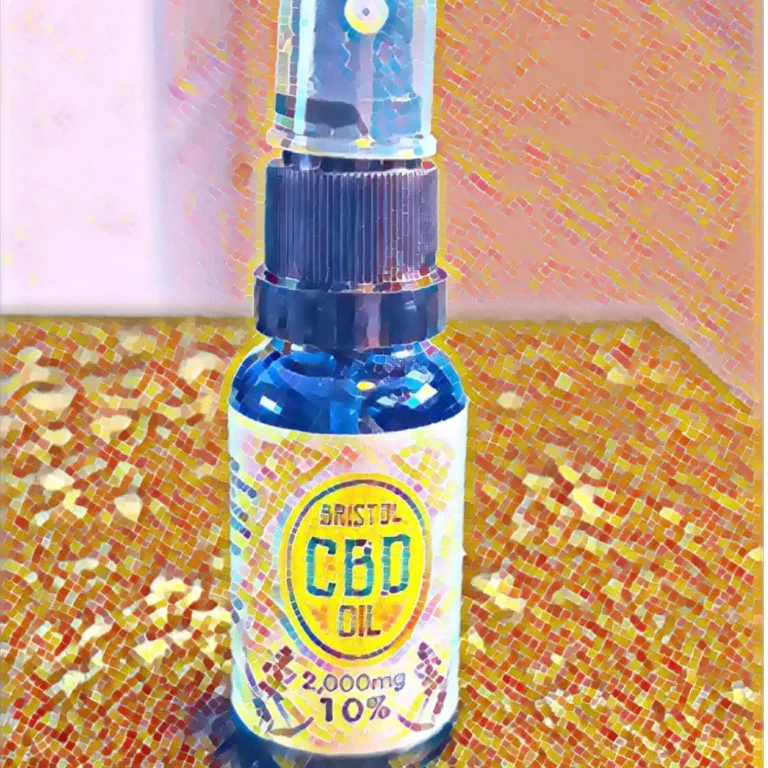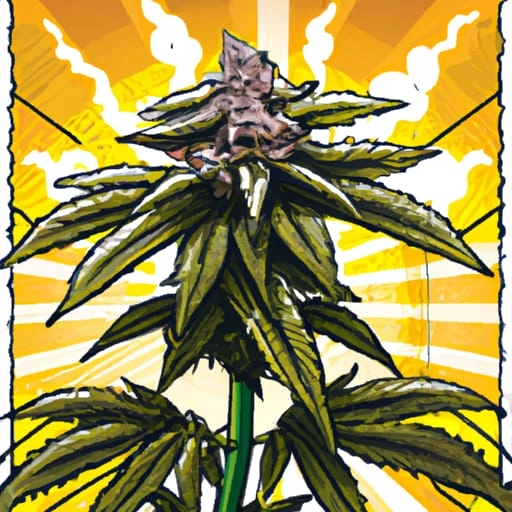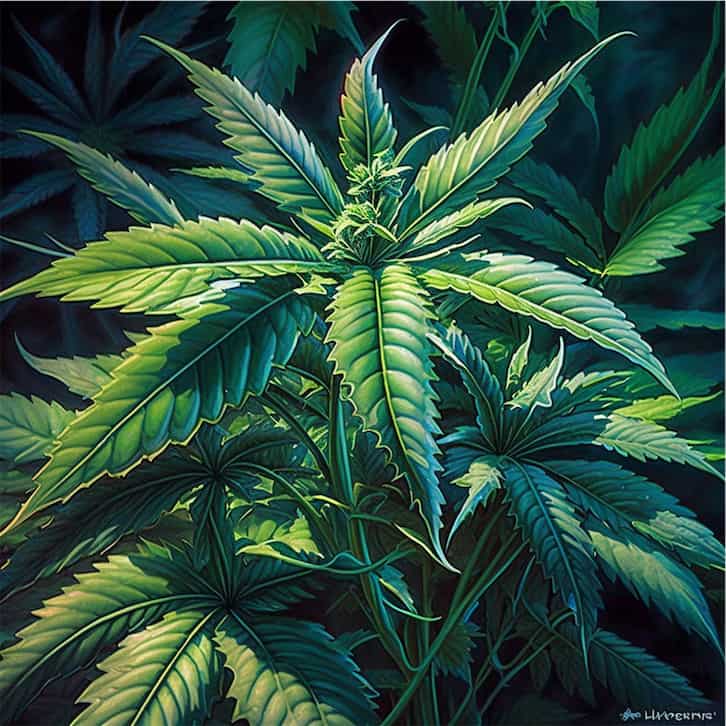Random But Fascinating Cannabis Facts
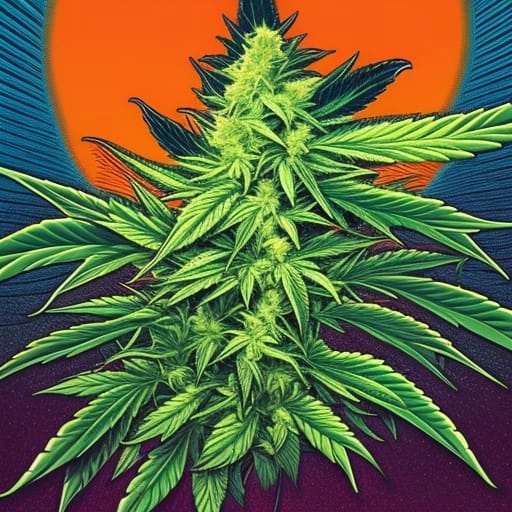
Cannabis Facts: Introduction
Do you want to learn some amazing information that will change the way you look at cannabis forever? Cannabis is an incredibly intriguing chemical, having a long and varied history and a wide variety of unexpected qualities that have made it useful in many different contexts throughout the ages.
Whether you’re a seasoned smoker or have never tried cannabis before, this list of 101 weird yet interesting facts about cannabis is sure to provide you with lots of interesting nuggets. To that end, lighten up, kick back, and prepare to expand your horizons.
Cannabis Usage
WHO says that North America has the highest rates of cannabis use. In the US, 17% of people say they have used cannabis in the past year.
After legalisation in 2018, 15% of Canadians over 15 said they had used marijuana in the past three months.
In Europe, 15% of people in the Czech Republic say they have used in the past year, which is the highest rate.
Uruguay, Jamaica, and Spain, where cannabis is no longer illegal, also have high rates of use.
China and Russia have low rates of use because they have strict laws and make sure they are followed.
Cannabis use data may not be accurate because it is based on self-reported information, which may be underreported because the drug is illegal in some countries.
The 2019 National Survey on Drug Use and Health says that 48.2 million Americans have tried marijuana at least once. 18% of them were still users.
Marijuana is the most popular illegal drug in the world, with 158.8 million users.
In 2016, there were 24 million regular marijuana users in the United States, or 8.9% of the population.
In 2017, 14.5% of high school seniors (more than all eighth- and 10th-graders combined) said they had used marijuana in the last 30 days.
61% of Americans agree that medical marijuana should be legal.
According to a 2016 study published in the Journal of Addiction Medicine, the number of people with cannabis-related problems who went to emergency rooms went from 51 to 73 per 100,000
A 2018 study found that the number of pregnant women who used marijuana more than doubled from 2009 to 2016.
In 2018, the most common illegal drug found in the blood of drivers who died in car accidents in the US was marijuana
In 2019, legal marijuana sales in the US were worth $12.9 billion, and by 2027, they are expected to be worth $73.6 billion.
A 2019 study found that people who use marijuana are more likely to have mental health problems like depression, anxiety, and psychosis.
In 2019, marijuana is legal in 33 states and the District of Columbia, either for medical or recreational use.
A 2018 study found that the number of older adults who use marijuana has been growing over the past few years. Many of them use it to treat chronic pain and other health problems.
In the United States, marijuana arrests made up 43% of all drug arrests in 2018.
A study from 2017 found that people who use marijuana have a higher chance of getting testicular cancer
Colorado’s economy grew by an estimated $8.3 billion in 2017 because of the marijuana business
A study from 2015 found that heavy users of marijuana have a higher risk of getting lung cancer.
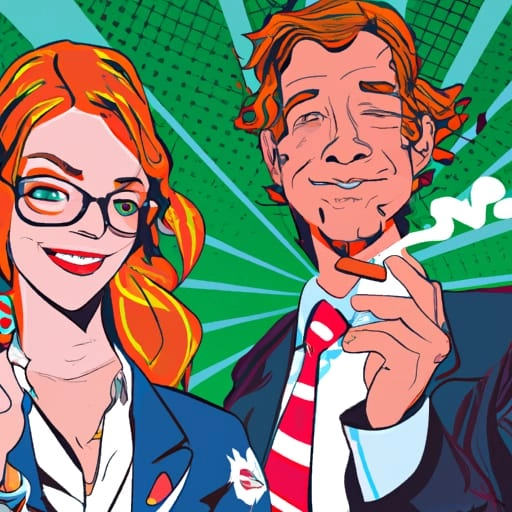
Facts About The History of Cannabis
Cannabis use can be traced back to ancient civilizations in Europe, Asia, and Africa.
The ancient Celts, Germans, and Scythians in Europe used cannabis both for medicine and for pleasure.
Cannabis was used to treat earaches, inflammation, and wounds in ancient Greece.
In ancient Rome, the doctor Galen said that people with gout and headaches should use cannabis.
In the Middle Ages, people in Europe used cannabis to treat menstrual cramps, toothaches, and skin problems.
Cannabis has been used to treat illnesses and for fun in Asia for thousands of years. In ancient China, it was recommended by the doctor Shen Nung to treat gout, rheumatism, and malaria.
Cannabis has been used for medicine and spiritual purposes in Africa for a long time. It was used by the ancient Egyptians to treat glaucoma and swelling.
Ancient people in the Americas, like the Maya and Aztecs, used cannabis for rituals and as medicine. The Aztecs used it to relieve pain and reduce swelling.
Cannabis was used as medicine in ancient China to treat gout, rheumatism, and malaria, among other things.
People say that in 2737 BCE, the Chinese emperor Shen Nung wrote one of the first texts about how cannabis could be used as medicine.
In ancient India, people thought of cannabis as a holy plant and used it in religious ceremonies. Hindu art often shows the god Shiva with a cannabis plant in his hand.
Cannabis was used to treat glaucoma and inflammation in ancient Egypt. The Ebers Papyrus, an Egyptian medical book from 1550 BCE, says that cannabis was used for these reasons.
Cannabis was used to relieve pain and treat a wide range of illnesses in mediaeval Europe, such as menstrual cramps, headaches, and toothaches.
Cannabis was a common ingredient in cough syrups, tinctures, and balms sold over-the-counter in the 19th century.
The Recent History of Cannabis
Cannabis has been used in Western and European culture for a long time, as far back as ancient times.
Hippocrates, an ancient Greek doctor, said that cannabis could help with pain and inflammation, among other things.
In mediaeval Europe, it was used to treat pain and a wide range of other health problems.
In the 19th century, people in the West became more interested in cannabis as a medicine. It was commonly used to treat pain, muscle spasms, and seizures.
Cannabis use became associated with counterculture and bohemian lifestyles in the 20th century, especially in the 1960s and 1970s.
In recent years, attitudes about cannabis have changed in Western and European countries. As a result, several countries have decriminalised or legalised the drug for medical and/or recreational use. This is because more and more research is showing that it might have medical benefits, and attitudes about the drug are also changing.
People are also becoming more interested in the economic benefits of cannabis, especially hemp, which is used to make a wide range of things like clothes, paper, and biofuel.
The US government gave marijuana to soldiers during World War II to help them deal with the stress of war.
In the 1960s, the US government started a campaign to make cannabis look bad and make it illegal, even though there was more and more evidence that it had medical benefits.
In the 1960s and 1970s, the counterculture movement and the growing number of young people who were seen as rebellious and non-conformist worried the Western world, especially the United States.
Many government officials and law enforcement agencies thought that cannabis and other drugs, such as LSD, played a big role in this trend.
They thought that young people who used these drugs were less likely to follow social rules and more likely to question authority and question the status quo.
People also worried that young people who used drugs like cannabis and LSD would be less likely to fight in foreign wars because they would be more likely to refuse to serve or run away if they were drafted.
This made the government strive harder to make these drugs look bad and make them illegal, even though there was more and more evidence that they could be used to treat medical problems.
The Controlled Substances Act of 1970 in the United States put cannabis on Schedule I, which means it had no medical use and a high chance of being abused.
In the 1970s, cannabis was put on Schedule I by the US government. This meant that it had no medical value and a high risk of being abused.
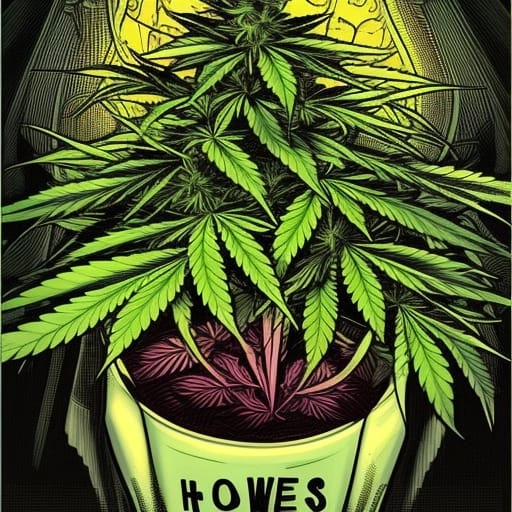
Why Did The World Criminalize Cannabis?
Economic Influence: The United States has a big impact on the world economy, and many countries depend on it as a major trading partner. Criminalizing cannabis to match US laws and rules could be seen as a way for other countries to keep their business relationships with the US on the up and up.
Political Influence: The United States is also a major player in world politics, and many countries may have felt pressured to make their drug policies similar to those of the US in order to keep good political relations.
Military Aid: In the past, the US has helped other countries with their military, and many countries may have thought that making cannabis illegal was the only way to keep getting that assistance.
War on Drugs Campaign: At the end of the 20th century, the United States started a global campaign against drugs. Many other countries may have felt compelled to join this effort to show support for the US and cooperation on the issue.
In 1996, California was the first state to make marijuana legal for medical use.
Colorado and Washington were the first two states to let people use marijuana for pure enjoyment in 2012.
Chemical Facts About Cannabis
Cannabis has more than 100 different chemical compounds called cannabinoids. Tetrahydrocannabinol (THC) and cannabidiol are the most well-known (CBD).
THC is what makes the plant make you feel high. CBD, on the other hand, does not make you feel high and has been found to have a wide range of therapeutic benefits.
Cannabis also has chemicals called terpenes in it. These are what give the plant its smell and may also have health benefits.
When you smoke or eat cannabis, THC and other cannabinoids are taken in through the walls of your lungs or stomach. They are then carried by your bloodstream to your brain and other organs.
When inhaled, the effects of cannabis can be felt in minutes, but when eaten, it can take up to two hours.
Cannabis can have effects that last for several hours. How long the effects last depends on how much is used, how it is used, and how tolerant the person is.
Cannabis’s chemical compounds interact with CB1 and CB2 receptors, which are found in the brain and all over the body.
CB1 receptors are mostly found in the brain and are responsible for THC’s psychoactive effects. CB2 receptors, on the other hand, are mostly found in the immune system and are thought to be responsible for CBD and other cannabinoids’ anti-inflammatory and other healing effects.

Possible Health Benefits of Cannabis
Cannabis can be used to treat a wide range of conditions, such as chronic pain, multiple sclerosis, and post-traumatic stress disorder (PTSD).
Cannabis can be used to treat a wide range of conditions, such as chronic pain, multiple sclerosis, and post-traumatic stress disorder (PTSD).
Cannabis has been shown to help with chemotherapy-related symptoms like nausea and vomiting.
Neuroprotective properties have been found in cannabis, which may help stop or slow the development of neurodegenerative diseases like Alzheimer’s and Parkinson’s.
Researchers have found that cannabis has anti-inflammatory properties that could help treat conditions like rheumatoid arthritis and Crohn’s disease.
Researchers have found that cannabis can kill tumours, which could help treat some types of cancer.
Cannabis has been found to have anti-anxiety effects, which could help treat conditions like generalised anxiety disorder and social anxiety disorder.
Researchers have found that cannabis has antidepressant effects, which could help treat conditions like depression and postpartum depression.
But it’s important to remember that more research is still needed to figure out the pros and cons of cannabis use, and laws and rules vary from country to country and state to state.
Cannabis Facts from the Natural World
Cannabis is a flowering plant that comes from Central Asia and the subcontinent of India.
People think that the plant has been used for thousands of years to heal and for spiritual purposes.
Cannabis grows in a wide range of climates, from tropical to subtropical to temperate.
It usually grows in places with a fair amount of sunlight and soil that drains well.
Cannabis plants can get up to 20 feet tall in the wild, but when they are grown in a garden, they are usually shorter.
The buds, which are the flowers of the plant, have the most cannabinoids and terpenes.
Some animals, like the deer, eat the leaves and flowers of the cannabis plant.
The cabbage white butterfly is one insect that eats the leaves of the cannabis plant.
In the past few years, the cannabis plant has been used more and more in the industrial world to make things like fibre and oil from the seeds.
Research on the role of cannabinoids in insects, plants, and other animals is still relatively new, but scientists have begun to uncover some interesting findings.
In insects, research has found that the endocannabinoid system (ECS) plays a role in regulating various physiological processes, including feeding, metabolism, and immunity. For example, studies have shown that the ECS is involved in regulating the behavior of the fruit fly, Drosophila melanogaster, and the tobacco hornworm, Manduca sexta.
In plants, researchers have discovered that cannabinoids play a role in protecting the plant from environmental stressors, such as UV radiation and pathogens. Studies have also shown that cannabinoids may play a role in regulating plant growth and development.
In other animals, research has found that the ECS plays a role in regulating various physiological processes, including pain, appetite, mood, and memory. For example, studies have shown that the ECS is involved in regulating the behavior of fish, birds, and mammals.
Cannabinoids are found in a variety of plants, with the most well-known being the Cannabis sativa plant, which is the source of marijuana and hemp.
In addition to the Cannabis sativa plant, cannabinoids can also be found in other plants such as Echinacea purpurea, Helichrysum umbraculigerum, and Acmella oleracea.
Studies have also found that some fungi produce cannabinoids, including the fungus Penicillium, which produces the cannabinoid penicillic acid.
Some bacteria in the gut microbiome have also been found to produce cannabinoids. For example, the bacterium Staphylococcus epidermidis has been found to produce the cannabinoid cannabigerol (CBG).
In addition to being found on Earth, recent studies have also found that cannabinoids may be present in space. Astronomers have discovered a molecule called propyl formate, which is similar to the molecule that gives raspberries their flavor, and it’s also a precursor of the formation of cannabinoid-like compounds.

Legal Status of Cannabis Around The World
Please be aware that this is rapidly changing so be aware of the legality where you are before you use.
Cannabis is illegal at the federal level in the United States as of 2021, but it is legal for recreational use in a few states.
In 2018, Canada made it legal for people to use cannabis for pleasure.
In Europe, cannabis laws vary a lot from country to country. Some countries make it less illegal to own or use cannabis, while others let people use it for medical reasons.
Cannabis laws in Africa are also very different, with some countries allowing it for medical use and others not.
Most countries in Asia make it illegal to own or use cannabis. However, cannabis is legal for medical use in Israel, and it was made legal for medical use in Thailand in 2018.
CBD is legal in many countries, but the rules vary a lot from place to place. CBD products made from hemp are legal at the federal level in the United States, but rules vary by state.
Products with CBD are legal in Europe as long as they have less than 0.2% THC. CBD products can be sold in Canada as long as they come from hemp and have less than 0.3% THC.
Most Asian countries make it illegal to own or use CBD, and the laws are strict.
It’s important to keep in mind that the laws about cannabis and CBD are complicated and change quickly. The above information is correct as of 2021, but it shouldn’t be taken as legal advice.
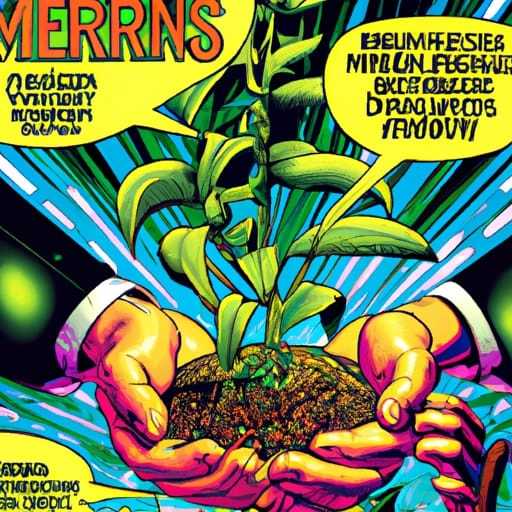
Further Reading
Here are some links to authoritative and reputable websites with information on all aspects of cannabis:
The World Health Organization (WHO): https://www.who.int/substanceabuse/facts/cannabis/en/
The National Institute on Drug Abuse (NIDA): https://www.drugabuse.gov/publications/drugfacts/marijuana
The Centers for Disease Control and Prevention (CDC): https://www.cdc.gov/marijuana/index.htm
The National Center for Complementary and Integrative Health (NCCIH): https://www.nccih.nih.gov/health/cannabis-marijuana-and-cannabidiol-cbd
The Substance Abuse and Mental Health Services Administration (SAMHSA): https://www.samhsa.gov/find-help/marijuana
The Canadian Centre on Substance Use and Addiction (CCSA): https://www.ccsa.ca/cannabis
The European Monitoring Centre for Drugs and Drug Addiction (EMCDDA): https://www.emcdda.europa.eu/topics/pods/cannabis
The Australian Government Department of Health: https://www.health.gov.au/health-topics/cannabis-and-the-law
Other Articles on This Website About Cannabis
The 7 Best Strains of Cannabis for PTSD
Sativa For Anxiety? Is it Any Good?
What is the best THC / CBD ratio for sleep? 3 Easy Answers To Your Questions

